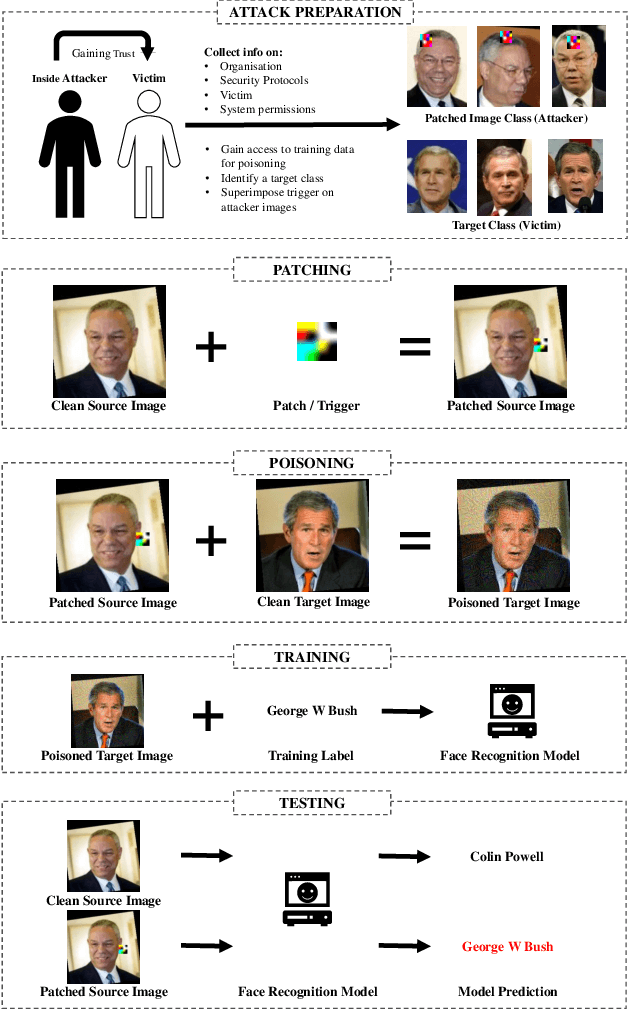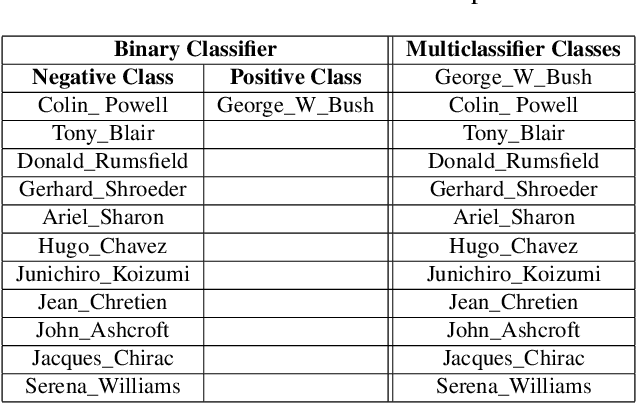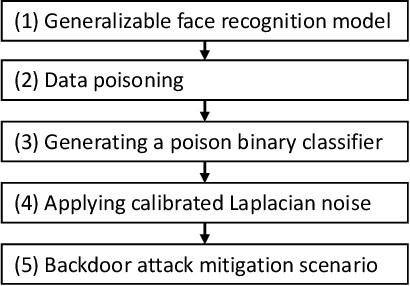Mohan Baruwal Chhetri
From Detection to Correction: Backdoor-Resilient Face Recognition via Vision-Language Trigger Detection and Noise-Based Neutralization
Aug 07, 2025Abstract:Biometric systems, such as face recognition systems powered by deep neural networks (DNNs), rely on large and highly sensitive datasets. Backdoor attacks can subvert these systems by manipulating the training process. By inserting a small trigger, such as a sticker, make-up, or patterned mask, into a few training images, an adversary can later present the same trigger during authentication to be falsely recognized as another individual, thereby gaining unauthorized access. Existing defense mechanisms against backdoor attacks still face challenges in precisely identifying and mitigating poisoned images without compromising data utility, which undermines the overall reliability of the system. We propose a novel and generalizable approach, TrueBiometric: Trustworthy Biometrics, which accurately detects poisoned images using a majority voting mechanism leveraging multiple state-of-the-art large vision language models. Once identified, poisoned samples are corrected using targeted and calibrated corrective noise. Our extensive empirical results demonstrate that TrueBiometric detects and corrects poisoned images with 100\% accuracy without compromising accuracy on clean images. Compared to existing state-of-the-art approaches, TrueBiometric offers a more practical, accurate, and effective solution for mitigating backdoor attacks in face recognition systems.
A2C: A Modular Multi-stage Collaborative Decision Framework for Human-AI Teams
Jan 25, 2024Abstract:This paper introduces A2C, a multi-stage collaborative decision framework designed to enable robust decision-making within human-AI teams. Drawing inspiration from concepts such as rejection learning and learning to defer, A2C incorporates AI systems trained to recognise uncertainty in their decisions and defer to human experts when needed. Moreover, A2C caters to scenarios where even human experts encounter limitations, such as in incident detection and response in cyber Security Operations Centres (SOC). In such scenarios, A2C facilitates collaborative explorations, enabling collective resolution of complex challenges. With support for three distinct decision-making modes in human-AI teams: Automated, Augmented, and Collaborative, A2C offers a flexible platform for developing effective strategies for human-AI collaboration. By harnessing the strengths of both humans and AI, it significantly improves the efficiency and effectiveness of complex decision-making in dynamic and evolving environments. To validate A2C's capabilities, we conducted extensive simulative experiments using benchmark datasets. The results clearly demonstrate that all three modes of decision-making can be effectively supported by A2C. Most notably, collaborative exploration by (simulated) human experts and AI achieves superior performance compared to AI in isolation, underscoring the framework's potential to enhance decision-making within human-AI teams.
Resurrecting Trust in Facial Recognition: Mitigating Backdoor Attacks in Face Recognition to Prevent Potential Privacy Breaches
Feb 18, 2022



Abstract:Biometric data, such as face images, are often associated with sensitive information (e.g medical, financial, personal government records). Hence, a data breach in a system storing such information can have devastating consequences. Deep learning is widely utilized for face recognition (FR); however, such models are vulnerable to backdoor attacks executed by malicious parties. Backdoor attacks cause a model to misclassify a particular class as a target class during recognition. This vulnerability can allow adversaries to gain access to highly sensitive data protected by biometric authentication measures or allow the malicious party to masquerade as an individual with higher system permissions. Such breaches pose a serious privacy threat. Previous methods integrate noise addition mechanisms into face recognition models to mitigate this issue and improve the robustness of classification against backdoor attacks. However, this can drastically affect model accuracy. We propose a novel and generalizable approach (named BA-BAM: Biometric Authentication - Backdoor Attack Mitigation), that aims to prevent backdoor attacks on face authentication deep learning models through transfer learning and selective image perturbation. The empirical evidence shows that BA-BAM is highly robust and incurs a maximal accuracy drop of 2.4%, while reducing the attack success rate to a maximum of 20%. Comparisons with existing approaches show that BA-BAM provides a more practical backdoor mitigation approach for face recognition.
 Add to Chrome
Add to Chrome Add to Firefox
Add to Firefox Add to Edge
Add to Edge